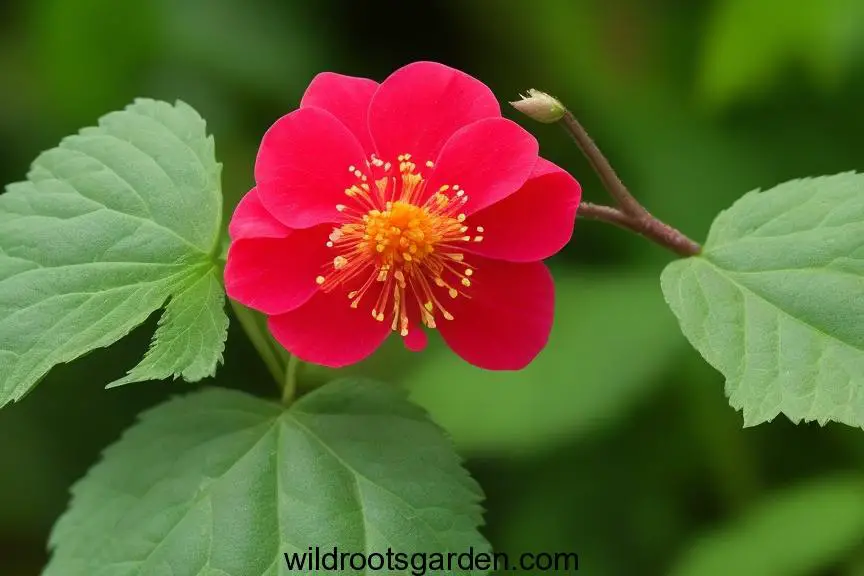My stomach is the one that gave you today’s post. When I was in the Florida Everglades or Florida’s woodlands before moving to the Pacific Northwest three years ago, I terribly missed having my well-honed knowledge and skills of natural foraging available to me. I’ve learned a lot over the last three years (and I’m still learning), but not quite enough to put a price on a lifetime spent in a subtropical region. I’ve discovered a few favorites that I see frequently, and the one I’m going to tell you about today is the renowned salmonberry, which is quite abundant everywhere, especially in the woods across the street from my house.
Table of Contents
Salmonberry Blossom, Olympia, Washington
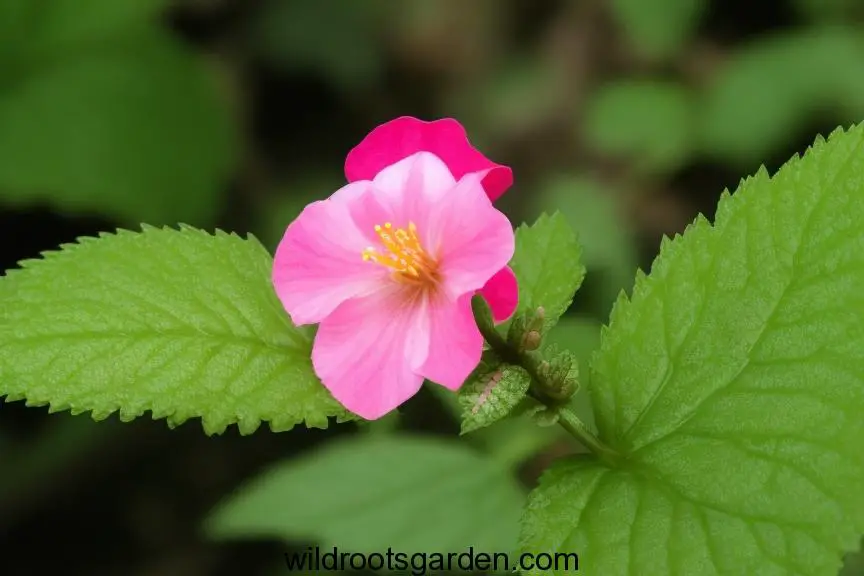
The salmonberry (Rubus spectabilis), along with other fruits that share a family with it, including blackberries, raspberries, thimbleberries, loganberries, boysenberries, etc., belongs to the rose genus. Each of them has five petals, and they all bear beautiful orange berries that are actually drupelets with seeds inside each one. When fruit is ripe, it can vary greatly in color, and this variance seems to be more influenced by the specific plant than by the environment or the season. It’s common for them to be bright orange, but I’ve also seen some that were brilliant crimson (and tasty!) or even a few that were dark purple.
Snoqualmie Pass, Washington’s Salmonberry Bloom, at 3000 feet in the Cascade Mountains
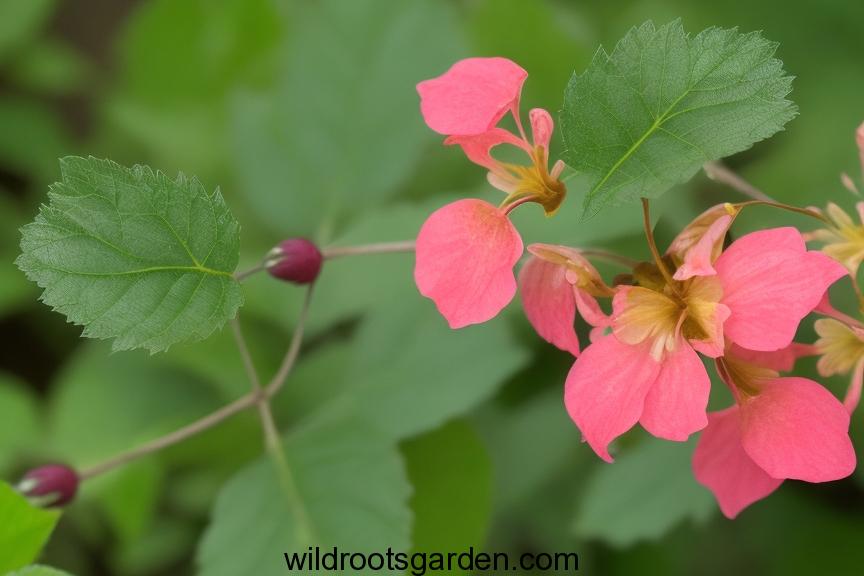
The very common salmonberry is a rather “viney” shrub that is native to Washington, Oregon, Northern California, certain areas of Idaho, British Columbia, and portions of Alaska. It is found in damp to wet woods from sea level to quite high elevations in the West Coast mountains. Even at the very top of Snoqualmie Pass, amid alpine lakes, in the Cascade Mountains of Washington, and not far from Puget Sound, I’ve seen them thrive and bloom in great profusion. The majority of the time (but not always), you can find them growing next to creeks and streams with moderate sunlight and sheltered by bigger conifers like Douglas firs, western red cedars, and western hemlocks. One of the first Pacific Northwest woodland flowers, they will bloom in a profusion of brilliant pink to magenta blossoms in early spring, fast maturing by late spring and early summer. They will grow up to 6–8 feet tall in these rich, moist soils, and occasionally up to 12 feet. They can be identified by their sparsely prickly, woody, weak stems when they are not in bloom or bearing fruit. By late autumn and into winter, the stems will turn brown and become even more fragile.
Pollinated Salmonberry
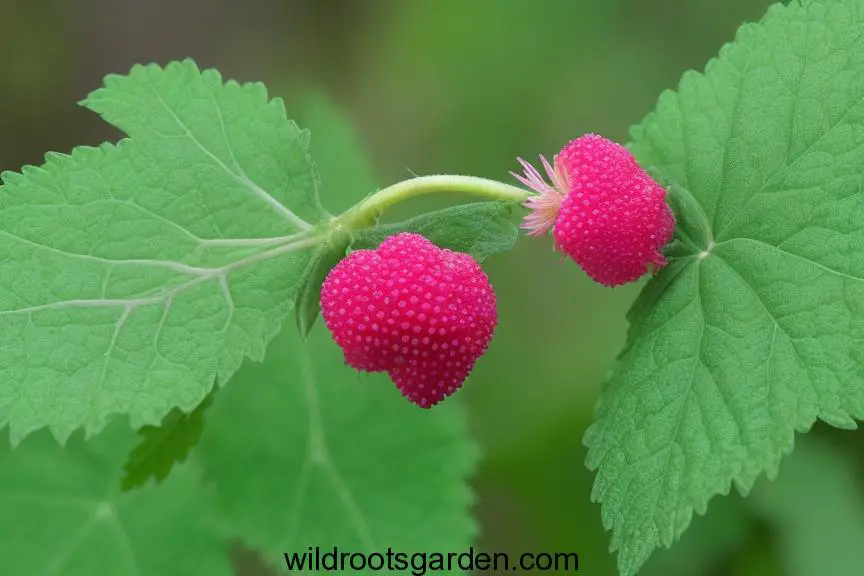
Salmonberries are essential for many of the inhabitants of their various environments (as soon as the petals fall, the droplets start to grow and take on the appearance of what we know as the salmonberry).
Deer, elk, moose, mountain goats, rabbits, porcupines, and even beavers eat the leaves and young green shoots, while a wide range of birds, foxes, coyotes, squirrels, bears, chipmunks, pikas, raccoons, and a host of other woodland creatures enjoy the fruits. For their own survival, hummingbirds, bees, and other insects depend on these early spring sources of nectar (sugar calories).
Salmonberries at full ripeness!
(common native wild color)
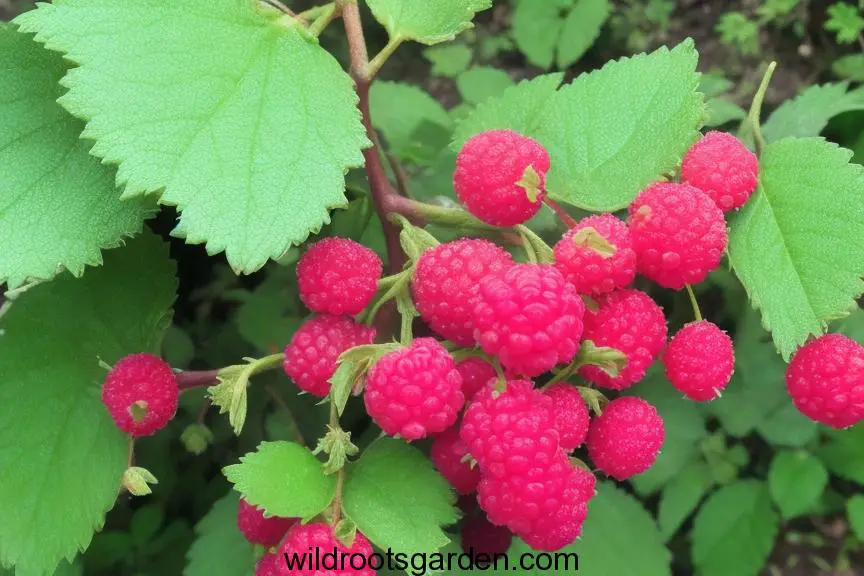
The Native American tribes of the Pacific Northwest used this abundant crop for the fresh berries they provided as raw fruit, mixed with oolichan grease (the fat from the candlefish, a local fish related to smelt), salmon spawn, or just eaten with fresh salmon mixed with roe, as their ripeness coincided with the spawning of the Chinook salmon, who were historically important for humans. The leaves were consumed raw or boiled, and the tender shoots were scraped and eaten for their sugary deliciousness.
Some salmonberries might even be purple or bright red in color.
Did you realize that the salmonberry we are familiar with is actually a collection of drupelets? Similar to other bramble berries like raspberries and blackberries, these are clusters of little berries, each holding a seed, that grow from a single blossom.
Recipe: Salmonberry Jam
Ingredients:
- Fresh salmonberries
- Sugar
- Lemon juice
Instructions:
- Wash and drain the salmonberries.
- Combine an equal amount of berries and sugar in a pot.
- Add a splash of lemon juice to enhance the flavor.
- Cook on medium heat, stirring frequently, until the mixture thickens.
- Once the desired consistency is reached, remove it from the heat and let it cool.
- Transfer the jam to sterilized jars and seal.
Recipe: Salmonberry Galette
Ingredients:
- Pie dough
- Fresh salmonberries
- Sugar
- Egg wash
Instructions:
- Roll out the pie dough into a circle.
- Arrange the salmonberries in the center, leaving a border.
- Sprinkle sugar over the berries.
- Fold the edges of the dough over the berries.
- Brush the crust with an egg wash.
- Bake until the crust is golden and the berries are bubbling.
Recipe: Salmonberry Vinaigrette Salad
Ingredients:
- Fresh salmonberries
- Mixed greens
- Goat cheese
- Pecans
- Balsamic vinaigrette
Instructions:
- Toss mixed greens with balsamic vinaigrette.
- Top with fresh salmonberries, crumbled goat cheese, and pecans.
FAQs About Salmonberries:
Are salmonberries safe to eat?
Yes, salmonberries are safe to eat when ripe. In fact, they are considered a delicious and nutritious wild berry. They are a good source of vitamins A, C, E, and K, and dietary fiber. However, be sure to only eat berries that are fully ripe and red or orange in color. Green or yellow berries could be unripe and may cause stomach upset.
Can I cultivate salmonberries in my garden?
Yes, you can cultivate salmonberries in your garden! They prefer moist, well-drained soil with partial shade and can be propagated from seeds, cuttings, or root suckers. However, they are not self-fertile, so you will need to plant at least two different cultivars to ensure good fruit production. They also tend to spread vigorously, so consider planting them in a container or providing a barrier to contain their growth.
What other berries are similar in taste to salmonberries?
Salmonberries have a unique flavor that is often described as a tart yet sweet mix of raspberries, strawberries, and cranberries. Depending on your taste buds, you might also find similarities to apricots or peaches. If you’re looking for similar berries to try, raspberries, loganberries, and young blackberries might be good substitutes.
Do salmonberries have any symbolic meaning in Indigenous cultures?
Yes, salmonberries hold significant cultural and spiritual meaning for many Indigenous groups along the Pacific Northwest coast. They are associated with abundance, renewal, and resilience. Traditionally, they are used in medicines, ceremonies, and as a food source. Some tribes associate the salmonberry’s reddish-orange color with fire, representing warmth and strength.
Are there any toxic lookalikes for salmonberries?
everal lookalikes are not safe to eat, so it’s important to be able to identify true salmonberries before consuming them. Some potential lookalikes include:
Dwarf red elderberry: These have red berries that grow in clusters, but the leaves are much different from salmonberry leaves. Elderberries are not poisonous when cooked, but eating raw berries can cause nausea and vomiting.
Oregon false-raspberry: These have red berries that look similar to raspberries, but the leaves have sharp teeth and lack the fine hairs found on salmonberry leaves. These berries are poisonous and can cause severe illness.
Mayapple: These have white berries that grow in clusters close to the ground, but the leaves are large and rounded, unlike salmonberry leaves. Mayapple berries are mildly poisonous and can cause stomach upset.
Always be cautious when foraging for wild berries, and if you’re unsure about a particular berry, it’s best to err on the side of caution and not eat it.
Final Thoughts
In the heart of the Pacific Northwest, the unassuming salmonberry emerges as a symbol of the region’s diverse ecosystems and rich cultural heritage. Its vibrant colors, distinctive flavor, and culinary versatility make it a treasure waiting to be discovered. Whether enjoyed in jams, pastries, salads, or beverages, the salmonberry’s presence is a reminder of the beauty and interconnectedness of nature.

